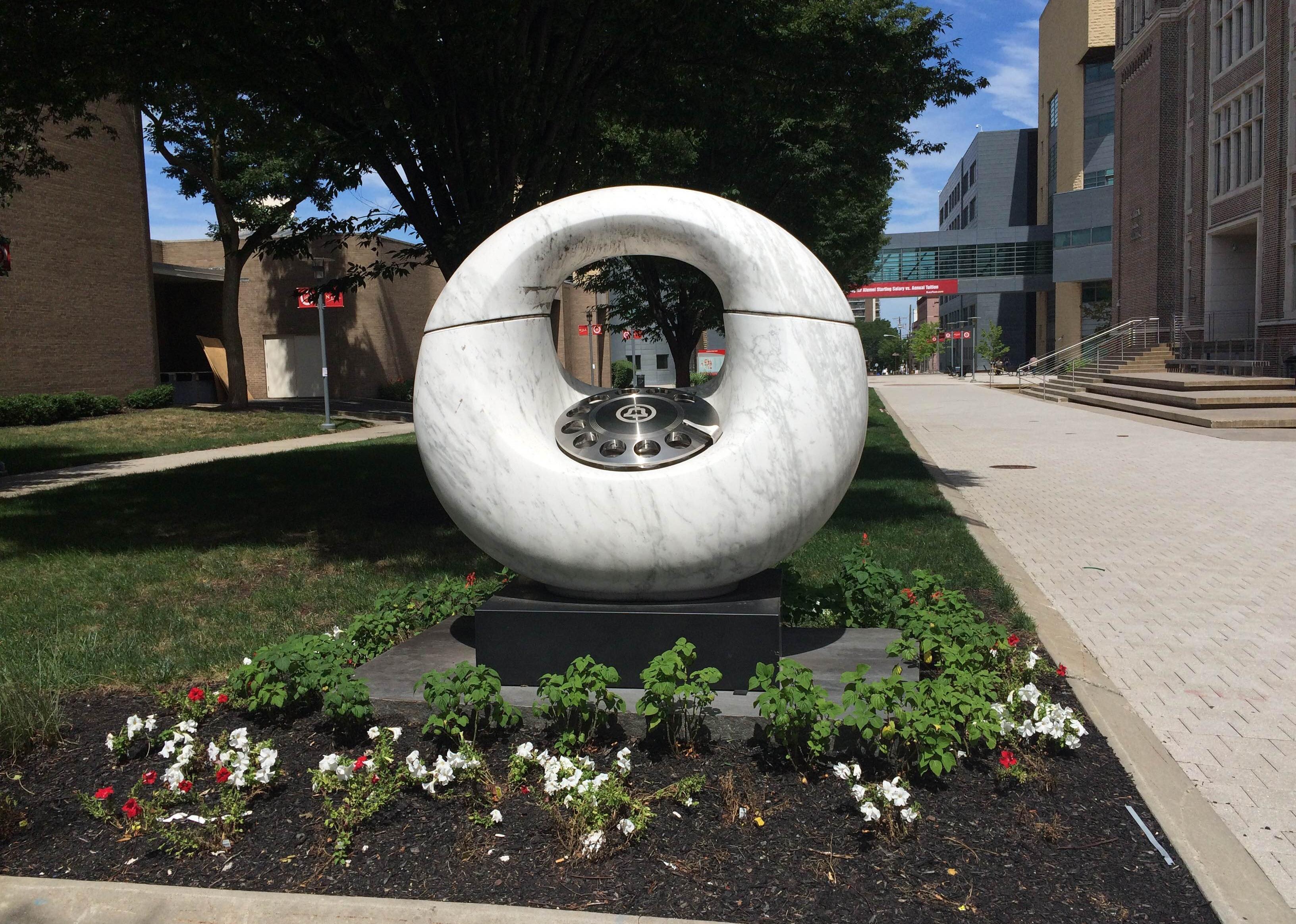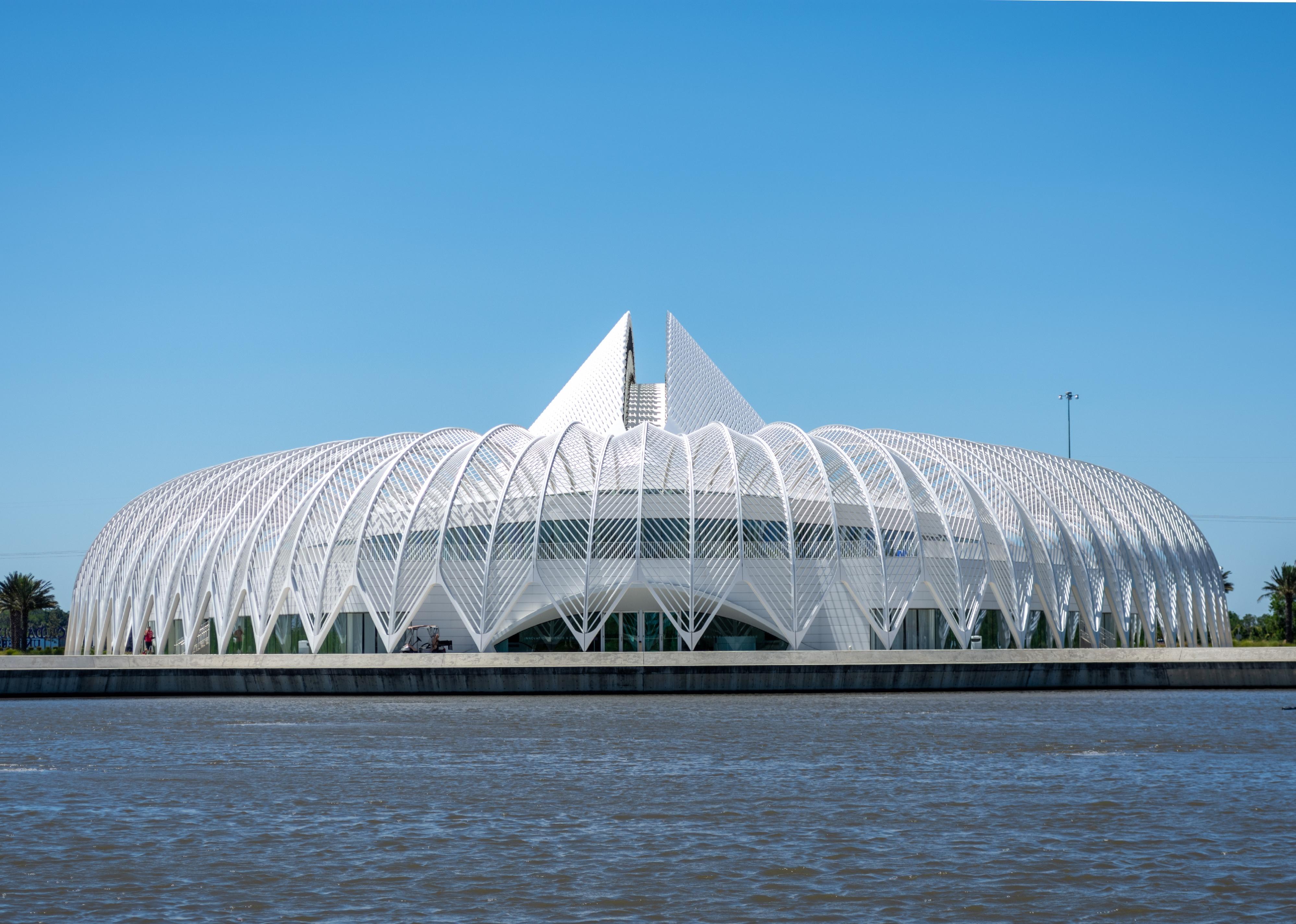
Top 10 colleges with the most students enrolled in popular STEM programs
This story originally appeared on EDsmart and was produced and distributed in partnership with Stacker Studio.
Top 10 colleges with the most students enrolled in popular STEM programs
Over the last 30 years, employment in the science, technology, engineering, and mathematics fields has grown by more than 79%. The number of STEM jobs in the U.S. is projected to rise by approximately 11% between 2021 and 2031, according to data from the Bureau of Labor Statistics.
As of 2021, around 10 million workers were employed in STEM jobs, according to the BLS, with jobs in computer science, mathematics, architecture, engineering, management, postsecondary teaching, and marketing paying "substantially more" than other jobs, with median annual wages amounting to $95,420 as of May 2021.
The growth in STEM jobs and the high wages workers in such occupations earn have attracted students to pursue degrees in those fields. As of 2019, science and engineering subject areas constituted 65% of doctorate degrees conferred by U.S. universities, according to data from the National Science Foundation. Accounting for all degree levels, the proportion of science and engineering degrees relative to all degrees rose from 24% to 27% in 2019.
Despite the growth of STEM fields and degree programs, there remains a long way to go in achieving gender and racial diversity in STEM degrees and jobs. Women comprise only 1 in 4 of those holding computer science and engineering jobs, whereas they are "overrepresented in health-related jobs," according to the Pew Research Center. Disparities become even more pronounced with regard to race, with white workers holding STEM-related positions outnumbering Hispanic, Asian, and Black workers combined.
Using 2020 enrollment data from College Scorecard, EDsmart compiled a list of the 10 schools with the largest share of students enrolled in STEM programs. To broaden the list beyond schools that are focused exclusively on a specific discipline of STEM, the data excluded schools that award more than 80% of degrees in a single STEM program. All colleges on the list have at least 1,000 students enrolled across all programs and predominantly award bachelor's degrees.

#10. New Jersey Institute of Technology
- Enrollment: 8,311
- Tuition: $17,674 in-state, $33,386 out-of-state
- Admission rate: 66.0%
- Graduation rate: 41.1%
- Share of students enrolled in STEM programs: 85.5%
--- Enrolled in computer degrees: 24.6%
--- Enrolled in health degrees: 0.0%
--- Enrolled in biology degrees: 6.3%
--- Enrolled in engineering degrees: 40.3%
--- Enrolled in engineering technology degrees: 12.6%
--- Enrolled in math degrees: 1.7%
--- Enrolled in science technology degrees: 0.0%
Just a half hour's drive from the Big Apple, the New Jersey Institute of Technology in Newark, New Jersey, is considered one of the best public STEM schools in the country and, according to Forbes, is the #1 public university in the state. The school offers over 120 degree programs, including nearly 30 in its engineering program.
While NJIT emphasizes academic excellence and professional preparation, students there also have access to 140 organizations and clubs, community service projects, and all the entertainment that comes with being located a quick train ride away from New York City.

#9. Universidad Politecnica de Puerto Rico
- Enrollment: 3,686
- Tuition: $8,640 in-state, $8,640 out-of-state
- Admission rate: not available
- Graduation rate: 2.4%
- Share of students enrolled in STEM programs: 87.0%
--- Enrolled in computer degrees: 5.4%
--- Enrolled in health degrees: 0.0%
--- Enrolled in biology degrees: 0.0%
--- Enrolled in engineering degrees: 79.3%
--- Enrolled in engineering technology degrees: 2.3%
--- Enrolled in math degrees: 0.0%
--- Enrolled in science technology degrees: 0.0%
Located in San Juan, Puerto Rico—with branch campuses in Miami and Orlando, Florida—this private, not-for-profit university offers undergraduate and graduate degrees in architecture, business, and engineering. Most of the university's offerings are in STEM fields.
Degrees include those in architecture, product design, interior design, accounting, marketing, entrepreneurship, construction management, and computer, mechanical, environmental, and civil engineering.

#8. Montana Technological University
- Enrollment: 1,418
- Tuition: $7,390 in-state, $22,540 out-of-state
- Admission rate: 97.3%
- Graduation rate: 30.0%
- Share of students enrolled in STEM programs: 88.5%
--- Enrolled in computer degrees: 2.5%
--- Enrolled in health degrees: 23.1%
--- Enrolled in biology degrees: 3.3%
--- Enrolled in engineering degrees: 58.5%
--- Enrolled in engineering technology degrees: 0.0%
--- Enrolled in math degrees: 1.1%
--- Enrolled in science technology degrees: 0.0%
Based in the city of Butte, this University of Montana system-affiliated university was founded in 1900 as the Montana State School of Mines. Also called "Montana Tech," this school brands itself as a "leading STEM university" in the Mountain West. Montana Tech has top course offerings in resource engineering as well as natural sciences, mathematics, computation, health, and business.
Montana Tech students can pursue certificate and degree programs at the associate, bachelor's, and master's levels, as well as doctorate programs in Materials Science and Earth Science and Engineering.

#7. Milwaukee School of Engineering
- Enrollment: 2,492
- Tuition: $43,575 in-state, $43,575 out-of-state
- Admission rate: 60.1%
- Graduation rate: 48.4%
- Share of students enrolled in STEM programs: 89.1%
--- Enrolled in computer degrees: .0%
--- Enrolled in health degrees: 11.6%
--- Enrolled in biology degrees: 0.0%
--- Enrolled in engineering degrees: 77.6%
--- Enrolled in engineering technology degrees: 0.0%
--- Enrolled in math degrees: 0.0%
--- Enrolled in science technology degrees: 0.0%
This private, not-for-profit Wisconsin university offers students "real-world experience in top-ranked programs, from expert faculty." Founded in 1903, MSOE offers degrees in engineering, business, and nursing at the bachelor's and master's levels. According to the university, between 2020 and 2021, 95% of MSOE graduates "got the job or into the graduate school of their choice."

#6. Missouri University of Science and Technology
- Enrollment: 6,050
- Tuition: $10,165 in-state, $28,116 out-of-state
- Admission rate: 81.5%
- Graduation rate: 24.4%
- Share of students enrolled in STEM programs: 89.2%
--- Enrolled in computer degrees: 11.7%
--- Enrolled in health degrees: 0.0%
--- Enrolled in biology degrees: 3.9%
--- Enrolled in engineering degrees: 66.9%
--- Enrolled in engineering technology degrees: 5.5%
--- Enrolled in math degrees: 1.2%
--- Enrolled in science technology degrees: 0.0%
Missouri S&T in Rolla, Missouri, is a public research university focusing on STEM subjects. Part of the University of Missouri system, the school offers students degrees in computer science, computer engineering, explosives engineering, entrepreneurship, education, physical and behavioral sciences, and military science. In total, Missouri S&T provides more than 100 degree programs across 40 areas of study.

#5. Oregon Institute of Technology
- Enrollment: 3,571
- Tuition: $11,269 in-state, $31,379 out-of-state
- Admission rate: 95.1%
- Graduation rate: 24.8%
- Share of students enrolled in STEM programs: 89.5%
--- Enrolled in computer degrees: 4.4%
--- Enrolled in health degrees: 48.5%
--- Enrolled in biology degrees: 4.1%
--- Enrolled in engineering degrees: 19.0%
--- Enrolled in engineering technology degrees: 12.5%
--- Enrolled in math degrees: 1.0%
--- Enrolled in science technology degrees: 0.0%
Based in Klamath Falls and Portland, Oregon, Oregon Tech is the state's only polytechnic institution with a focus on STEM subjects. This Pacific Northwest public university has a 16:1 student-faculty ratio. It offers specialization in "engineering, technology, health care, business, communication and applied sciences such as psychology and environmental science" across 50 bachelor's and graduate degree programs.
Individuals pursuing certain majors at the university are eligible for the Western Undergraduate Exchange program, which allows students hailing from Alaska, Arizona, California, Colorado, Hawaii, Idaho, Montana, Nevada, New Mexico, North Dakota, South Dakota, Utah, Washington, Wyoming, Guam, and the Commonwealth of the Northern Mariana Islands to study at Oregon Tech, paying only 50% of out-of-state tuition and fees.

#4. South Dakota School of Mines and Technology
- Enrollment: 2,043
- Tuition: $11,020 in-state, $15,400 out-of-state
- Admission rate: 85.6%
- Graduation rate: 19.5%
- Share of students enrolled in STEM programs: 90.2%
--- Enrolled in computer degrees: 8.3%
--- Enrolled in health degrees: 0.0%
--- Enrolled in biology degrees: 4.3%
--- Enrolled in engineering degrees: 76.7%
--- Enrolled in engineering technology degrees: 0.0%
--- Enrolled in math degrees: 1.0%
--- Enrolled in science technology degrees: 0.0%
This Rapid City, South Dakota, public university prides itself on being a "collaborative research environment that involves faculty and students at every academic level [fostering] groundbreaking innovation, scientific breakthroughs, and a deep exploration of the cutting-edge." Founded in 1885, this school focuses exclusively on STEM subjects, offering programs in 20 engineering and science disciplines.
South Dakota Mines students are also obligated to take a core curriculum that involves courses in the arts, humanities, and social sciences. The university promises small classes instructed by professors, not graduate students, along with professional development and research opportunities.

#3. Worcester Polytechnic Institute
- Enrollment: 4,804
- Tuition: $54,416 in-state, $54,416 out-of-state
- Admission rate: 59.1%
- Graduation rate: 81.2%
- Share of students enrolled in STEM programs: 93.9%
--- Enrolled in computer degrees: 17.6%
--- Enrolled in health degrees: 0.0%
--- Enrolled in biology degrees: 5.4%
--- Enrolled in engineering degrees: 68.7%
--- Enrolled in engineering technology degrees: 0.0%
--- Enrolled in math degrees: 2.2%
--- Enrolled in science technology degrees: 0.0%
The Worcester Polytechnic Institute in Worcester, Massachusetts, is the country's third-oldest private university teaching technology and engineering. Founded in 1865, just before the American Industrial Revolution, WPI prides itself on being a "global leader in project-based learning."
The school offers over 70 programs at the doctorate, master's, bachelor's, and certificate levels in subjects such as science, engineering, technology, business, management, and the social sciences. In addition to its main campus, the university has more than 50 project centers worldwide.

#2. Florida Polytechnic University
- Enrollment: 1,290
- Tuition: $4,940 in-state, $21,005 out-of-state
- Admission rate: 58.4%
- Graduation rate: 36.2%
- Share of students enrolled in STEM programs: 96.3%
--- Enrolled in computer degrees: 55.3%
--- Enrolled in health degrees: 0.0%
--- Enrolled in biology degrees: 0.0%
--- Enrolled in engineering degrees: 41.0%
--- Enrolled in engineering technology degrees: 0.0%
--- Enrolled in math degrees: 0.0%
--- Enrolled in science technology degrees: 0.0%
This Lakeland, Florida, school is the state's only polytechnic focusing entirely on STEM subjects. Part of the Florida State University system, this school promises its students "cutting-edge programs and research opportunities."
Florida Polytechnic University offers graduate and undergraduate programs in applied mathematics, computer science, data science, engineering physics, engineering management, and other STEM disciplines. Furthermore, 70% of Florida's high-tech companies lie within 60 miles of the campus.

#1. Rose-Hulman Institute of Technology
- Enrollment: 1,969
- Tuition: $52,914 in-state, $52,914 out-of-state
- Admission rate: 76.6%
- Graduation rate: 75.2%
- Share of students enrolled in STEM programs: 97.2%
--- Enrolled in computer degrees: 15.4%
--- Enrolled in health degrees: 0.0%
--- Enrolled in biology degrees: 2.4%
--- Enrolled in engineering degrees: 77.0%
--- Enrolled in engineering technology degrees: 0.0%
--- Enrolled in math degrees: 2.6%
--- Enrolled in science technology degrees: 0.0%
Located in Terre Haute, Indiana, this university was founded in 1874 during the American Industrial Revolution as the Rose Polytechnic Institute. Rose-Hulman Institute of Technology advertises itself as a "world-class institution on the leading edge of engineering education" in the U.S.
The university has a student-faculty ratio of 10:1, an average class size of 20 students, and graduate and undergraduate programs in computer science, biomedical engineering, chemical engineering, and a host of other science, engineering, mathematical, and technical disciplines.
Data reporting by Emma Rubin. Story editing by Brian Budzynski. Copy editing by Paris Close. Photo selection by Clarese Moller.



